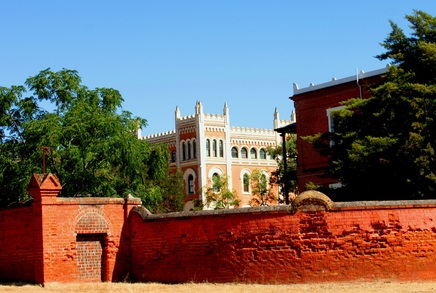
Pierre shot Paddy but Mary (and the fickle wind) saved the Spaniards and the corn
Flames lit by a rebellious Aborigine swept down towards the first crop of corn grown by the Benedictine monks in the New Norcia commune in Western Australia.
Monks in their flapping robes tried to beat out the fire. If they lost the corn after a struggling start in the harsh Australian land, the whole settlement could be put in the too hard basket.
And the story of the two Spaniards, the Frenchman, the Englishman and the Irishman who trudged off into the bush in 1847 to create a Benedictine commune would have ended right there.
As the relentless flames seared on towards them, the monks had a brainstorm. They carried a revered painting of the Madonna from their rough chapel and stuck it between the corn and fire. Hallelujah. The wind changed direction, the monks sent thanks to The Lord and praises to Our Lady and the truculent Aborigine sitting on the hill said “Wow!”
Awed by the white magic, he promptly chummed up with the monks and persuaded other Aborigines to move into the mission to hear the word of God, learn new ways, gain an education and/or trade and generally enjoy life in the mission cottages.
The French monk accidentally shot the Irish catechist dead, had a breakdown and went back to Europe. The Englishman took up land so the two Spanish monks were left to pray and plough the commune vision into reality.
New Norcia flourished in Spanish-style grandeur in the Australian bush, thanks to a change of wind (or a miracle organised by Mother Mary) and the towering figure of Spanish priest Dom Salvado.
It became the only surviving monastic commune in Australia, exuding an air of tranquillity and incongruity as it straddles the Great Northern Highway in the peaceful wheat, hay and sheep pastoral belt 130 km north-west of Perth.
It’s an unlikely setting for dumb thieves to pull off Western Australia’s biggest art heist. Also surprising is its role in the Rosetta Mission space probe, which is being woken up to plunge into a comet. The European Space Agency leases a bit of New Norcia’s strategically positioned land for one of its Rosetta receptors.
Twenty-seven of the 69 buildings in the town are heritage-listed. The four boarding schools – primaries and colleges for boys and girls – have long closed after educating more than 10,000 scholars but have evolved in the last 10 years as a venue for Perth schools to hold live-in seminars. Music, art and history courses are popular, with about two schools a week bringing groups for intensive study.
Monk numbers have dwindled from a high of 80 to only nine, including a novice, we were told on the daily tour led by Jillian Passmore. The monastery is excluded from the tour but you can peer through the gates into the serene courtyard where live the Benedictines who pray seven times a day (you can join them in the church). They also observe silence from 8.15pm to 5.15am.
New Norcia’s story began when Dom Joseph Serra and Dom Rosendo Salvado, a pair of monks pushed out of Spain by religious disputes in 1835, found themselves on an odyssey from Italy. They sailed to Perth and, in company with a French monk, an Irish catechist and an English settler, trekked off into the bush to build a commune and educate, and save the souls of, the intimidating and suspicious Aborigines.
The five men were part of a grand dream to set up three Spanish Benedictine monasteries in WA. The ones in the north and south soon failed but the commune in the midlands battled onward as Christian soldiers do.
After the departure in different directions of the distraught mis-firing Frenchman, the deceased chanting Irishman and the land-seeking Englishman, life was tough for the two Spaniards despite two English Benedictines forsaking comfort to join them.
The local indigenous crew had come on board to live in the missionary cottages and help with the work but even the miraculous fire-stopper Mary painting failed in the conversion stakes. The monks were able to save few Christian souls.
Wrote Dom Salvado: “As I walked up and down the furrow, holding the plough tail in my hands, my bare feet trampled on the sharp roots and stones and alas, my bleeding feet, besides the sweat of my brow, watered the soil I was working up.”
Dom Serra, the first abbot, wasn’t that entranced with watering the soil with his sweating brow and bleeding feet. He found a lot to keep him in Perth and after 10 “troubled” years sailed back to Europe, which allowed the remarkable, indefatigable Dom Salvado to become abbot and set the commune on its way to becoming a healthy agricultural enterprise with 22,000 acres and an astonishing architectural legacy.
Even the first pig keeper’s house is deemed worthy of restoration, although the piggery itself was moved to the other side of town after prevailing winds disturbed the serenity of the graceful seclusion of the monastery enclave.
The monks raised animals, grew crops and produced flour, honey, olives, wine, bread and chocolate. Attempts to nurture carob trees for the chocolate failed: being spiritually removed from matters sexual the monks failed to check the gender of the trees. Only female trees were grown so they had to import beans but the single-sex tree grove does offer nice shade to tourists.
Treasures and memorabilia collected over almost 150 years, including precious paintings, chalices and relics (some sent by Queen Isabella of Spain) are on display in a museum and art gallery.
In 1986 the art collection was targeted by masked thieves who bound and gagged the 61-year-old attendant, Connie McNaughton, and made off with paintings worth millions. The villains damaged the canvasses when they rolled them up so would have had trouble selling them on the black market.
They were quickly traced – a mould from a tyre on the car rented in their own names, a fingerprint in the gift shop – and the paintings were recovered as they were about to be sent to the Philippines. Restoration of the paintings cost a reported $200,000 before all but one – damaged beyond repair – were returned to the gallery by 2006.
In the last few years workplace health and safety, combined with diminished pairs of willing hands, has curbed production at the commune. Prudent as well as religious, the monks have licensed nearby enterprises to produce the New Norcia brand of popular jams, chutney, honey, olive oil and wine products.
A flour mill built in 1850 is the oldest surviving building and is unlocked for the tour but flour is now ground at the “new” mill, built in 1879. A traditional bakery still operates in New Norcia and all bread made in the town is sold in the town but the monks no longer knead the dough. The bakery and two more in Perth are run by a licensed operator.
Baked daily, the bread is simply heavenly.
New Norcia was named after the birthplace of St Benedict. In Italy the word is pronounced Nor-cheea but the Aussie version is Nausea. As Benedictines, the monks were autonomous from Rome and monks did not have to be Catholics. Nearly all are however, drawn to the Benedictine order’s values of spirituality, hospitality and humble work. It’s not all austerity: they are allowed two and half glasses of rose a day under St Benedict’s rules.
Abbot Salvado not only had extraordinary vision, leadership, determination, charm and a great capacity for toil in arduous circumstances. He was also a brilliant musician and a lateral thinker. When the commune ran short of funds after some tough years, he rustled up some cash by walking to Perth and putting on a piano concert. Citizens readily bought tickets to hear the Spanish monk play and the commune survived once again.
Dom Salvado also made regular fund-raising trips back to Europe. He died on a trip to Rome in 1900, aged 89. His death caused great distress in the Aborigine community. His body was brought back to New Norcia and lies beneath a vault in the church.
New Norcia’s first four abbots were Spanish. The last Spanish-born monk there died in 2000, aged nearly 100.
One can get to meet a monk on Saturday afternoon but we were lucky enough to have a quick chat with the novice as we wandered around the town in the cool of the early morning – not too early, though. It was after 5.15am so Dom Robert Nixon was happy to have a friendly chat.
He was unlocking buildings ready for the day’s influx of workers, worshippers and tourists. A former priest in Mt Isa, he was drawn to New Norcia by its spirituality. He brings a great talent to the town: he can play the organ. We wondered how many more novices are likely to follow.
New Norcia’s current monks will keep the town alive for a few decades but peeling plaster and crumbling walls testify to the fading of a way of life. Tourism only pays its own way. Agriculture and school seminars bring in some money and an architectural legacy like New Norcia will always find devotees and heritage foundations prepared to pitch in with funds to save a unique Australian town. It is a treasure beyond price: let’s pray the monastic treasury is in good shape.
Flames lit by a rebellious Aborigine swept down towards the first crop of corn grown by the Benedictine monks in the New Norcia commune in Western Australia.
Monks in their flapping robes tried to beat out the fire. If they lost the corn after a struggling start in the harsh Australian land, the whole settlement could be put in the too hard basket.
And the story of the two Spaniards, the Frenchman, the Englishman and the Irishman who trudged off into the bush in 1847 to create a Benedictine commune would have ended right there.
As the relentless flames seared on towards them, the monks had a brainstorm. They carried a revered painting of the Madonna from their rough chapel and stuck it between the corn and fire. Hallelujah. The wind changed direction, the monks sent thanks to The Lord and praises to Our Lady and the truculent Aborigine sitting on the hill said “Wow!”
Awed by the white magic, he promptly chummed up with the monks and persuaded other Aborigines to move into the mission to hear the word of God, learn new ways, gain an education and/or trade and generally enjoy life in the mission cottages.
The French monk accidentally shot the Irish catechist dead, had a breakdown and went back to Europe. The Englishman took up land so the two Spanish monks were left to pray and plough the commune vision into reality.
New Norcia flourished in Spanish-style grandeur in the Australian bush, thanks to a change of wind (or a miracle organised by Mother Mary) and the towering figure of Spanish priest Dom Salvado.
It became the only surviving monastic commune in Australia, exuding an air of tranquillity and incongruity as it straddles the Great Northern Highway in the peaceful wheat, hay and sheep pastoral belt 130 km north-west of Perth.
It’s an unlikely setting for dumb thieves to pull off Western Australia’s biggest art heist. Also surprising is its role in the Rosetta Mission space probe, which is being woken up to plunge into a comet. The European Space Agency leases a bit of New Norcia’s strategically positioned land for one of its Rosetta receptors.
Twenty-seven of the 69 buildings in the town are heritage-listed. The four boarding schools – primaries and colleges for boys and girls – have long closed after educating more than 10,000 scholars but have evolved in the last 10 years as a venue for Perth schools to hold live-in seminars. Music, art and history courses are popular, with about two schools a week bringing groups for intensive study.
Monk numbers have dwindled from a high of 80 to only nine, including a novice, we were told on the daily tour led by Jillian Passmore. The monastery is excluded from the tour but you can peer through the gates into the serene courtyard where live the Benedictines who pray seven times a day (you can join them in the church). They also observe silence from 8.15pm to 5.15am.
New Norcia’s story began when Dom Joseph Serra and Dom Rosendo Salvado, a pair of monks pushed out of Spain by religious disputes in 1835, found themselves on an odyssey from Italy. They sailed to Perth and, in company with a French monk, an Irish catechist and an English settler, trekked off into the bush to build a commune and educate, and save the souls of, the intimidating and suspicious Aborigines.
The five men were part of a grand dream to set up three Spanish Benedictine monasteries in WA. The ones in the north and south soon failed but the commune in the midlands battled onward as Christian soldiers do.
After the departure in different directions of the distraught mis-firing Frenchman, the deceased chanting Irishman and the land-seeking Englishman, life was tough for the two Spaniards despite two English Benedictines forsaking comfort to join them.
The local indigenous crew had come on board to live in the missionary cottages and help with the work but even the miraculous fire-stopper Mary painting failed in the conversion stakes. The monks were able to save few Christian souls.
Wrote Dom Salvado: “As I walked up and down the furrow, holding the plough tail in my hands, my bare feet trampled on the sharp roots and stones and alas, my bleeding feet, besides the sweat of my brow, watered the soil I was working up.”
Dom Serra, the first abbot, wasn’t that entranced with watering the soil with his sweating brow and bleeding feet. He found a lot to keep him in Perth and after 10 “troubled” years sailed back to Europe, which allowed the remarkable, indefatigable Dom Salvado to become abbot and set the commune on its way to becoming a healthy agricultural enterprise with 22,000 acres and an astonishing architectural legacy.
Even the first pig keeper’s house is deemed worthy of restoration, although the piggery itself was moved to the other side of town after prevailing winds disturbed the serenity of the graceful seclusion of the monastery enclave.
The monks raised animals, grew crops and produced flour, honey, olives, wine, bread and chocolate. Attempts to nurture carob trees for the chocolate failed: being spiritually removed from matters sexual the monks failed to check the gender of the trees. Only female trees were grown so they had to import beans but the single-sex tree grove does offer nice shade to tourists.
Treasures and memorabilia collected over almost 150 years, including precious paintings, chalices and relics (some sent by Queen Isabella of Spain) are on display in a museum and art gallery.
In 1986 the art collection was targeted by masked thieves who bound and gagged the 61-year-old attendant, Connie McNaughton, and made off with paintings worth millions. The villains damaged the canvasses when they rolled them up so would have had trouble selling them on the black market.
They were quickly traced – a mould from a tyre on the car rented in their own names, a fingerprint in the gift shop – and the paintings were recovered as they were about to be sent to the Philippines. Restoration of the paintings cost a reported $200,000 before all but one – damaged beyond repair – were returned to the gallery by 2006.
In the last few years workplace health and safety, combined with diminished pairs of willing hands, has curbed production at the commune. Prudent as well as religious, the monks have licensed nearby enterprises to produce the New Norcia brand of popular jams, chutney, honey, olive oil and wine products.
A flour mill built in 1850 is the oldest surviving building and is unlocked for the tour but flour is now ground at the “new” mill, built in 1879. A traditional bakery still operates in New Norcia and all bread made in the town is sold in the town but the monks no longer knead the dough. The bakery and two more in Perth are run by a licensed operator.
Baked daily, the bread is simply heavenly.
New Norcia was named after the birthplace of St Benedict. In Italy the word is pronounced Nor-cheea but the Aussie version is Nausea. As Benedictines, the monks were autonomous from Rome and monks did not have to be Catholics. Nearly all are however, drawn to the Benedictine order’s values of spirituality, hospitality and humble work. It’s not all austerity: they are allowed two and half glasses of rose a day under St Benedict’s rules.
Abbot Salvado not only had extraordinary vision, leadership, determination, charm and a great capacity for toil in arduous circumstances. He was also a brilliant musician and a lateral thinker. When the commune ran short of funds after some tough years, he rustled up some cash by walking to Perth and putting on a piano concert. Citizens readily bought tickets to hear the Spanish monk play and the commune survived once again.
Dom Salvado also made regular fund-raising trips back to Europe. He died on a trip to Rome in 1900, aged 89. His death caused great distress in the Aborigine community. His body was brought back to New Norcia and lies beneath a vault in the church.
New Norcia’s first four abbots were Spanish. The last Spanish-born monk there died in 2000, aged nearly 100.
One can get to meet a monk on Saturday afternoon but we were lucky enough to have a quick chat with the novice as we wandered around the town in the cool of the early morning – not too early, though. It was after 5.15am so Dom Robert Nixon was happy to have a friendly chat.
He was unlocking buildings ready for the day’s influx of workers, worshippers and tourists. A former priest in Mt Isa, he was drawn to New Norcia by its spirituality. He brings a great talent to the town: he can play the organ. We wondered how many more novices are likely to follow.
New Norcia’s current monks will keep the town alive for a few decades but peeling plaster and crumbling walls testify to the fading of a way of life. Tourism only pays its own way. Agriculture and school seminars bring in some money and an architectural legacy like New Norcia will always find devotees and heritage foundations prepared to pitch in with funds to save a unique Australian town. It is a treasure beyond price: let’s pray the monastic treasury is in good shape.
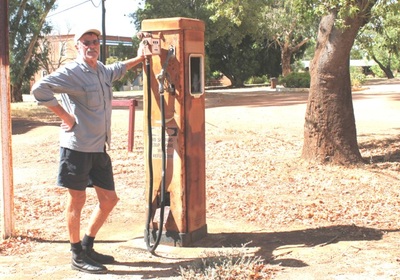
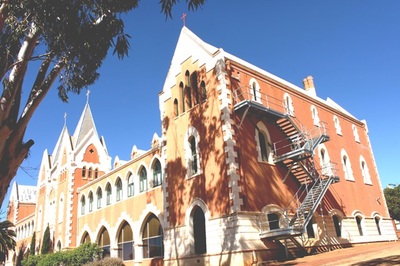

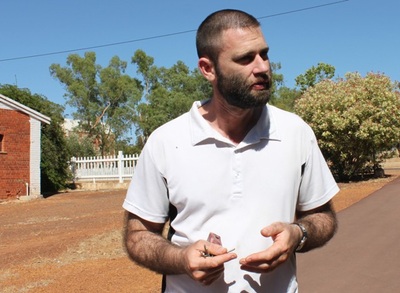
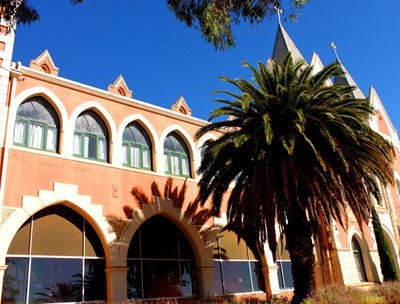
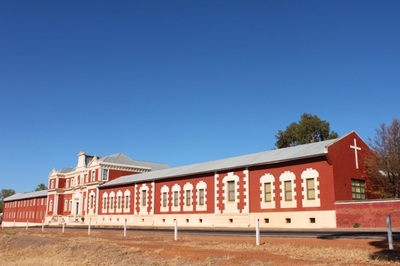
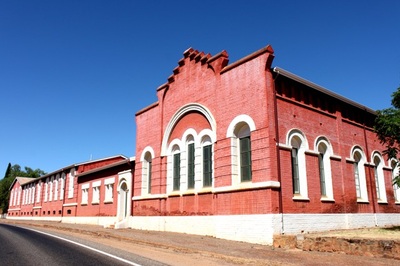
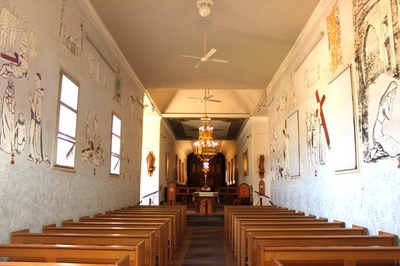
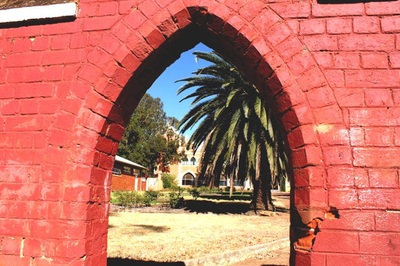
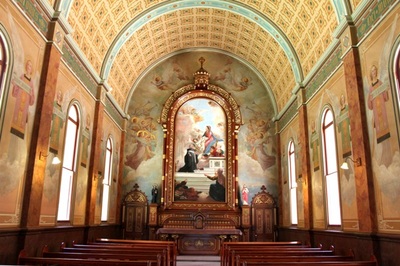
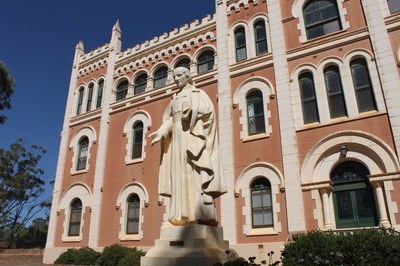

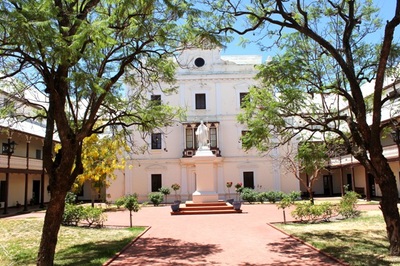
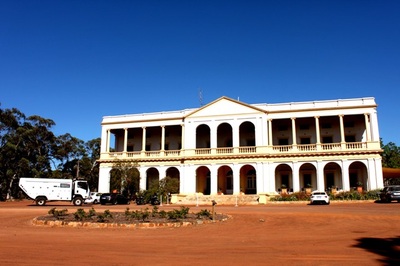

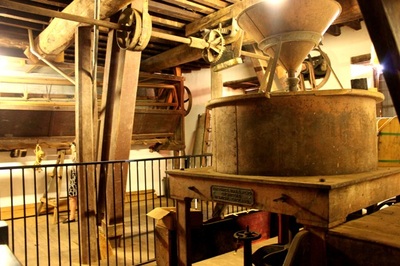
 RSS Feed
RSS Feed
